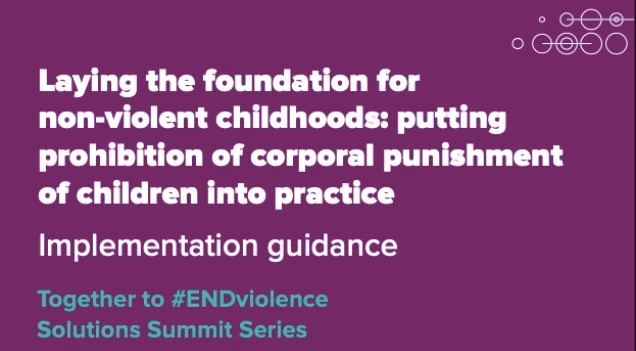Implementation Guidance: a strategy to eliminate violent punishment of children
The ultimate goal of prohibiting corporal punishment is to ensure that no child ever experiences it by eliminating its use completely. Legal prohibition sends a clear message that hitting and hurting a child, for whatever reason, is wrong, just as hitting and hurting adults is wrong. However, prohibition becomes really effective only when concrete measures are put in place to prevent children from experiencing corporal punishment, however light. Implementing the law is not only about responding to adults who violently punish children – it is primarily about transforming attitudes and practice so that physical punishment is no longer seen as acceptable, enabling a shift in social norms towards positive, non-violent childrearing methods.
Under the Sustainable Development Goals (SDGs) adopted in 2015, states have committed to building peaceful, non-violent societies in which human rights are respected. The agenda sets out 17 goals, targets for achieving each goal, and indicators to monitor progress towards each target. Ending corporal punishment is key to ending all violence against children (SDG target 16.2) and reducing violence across the whole of society in the longer term. It is also essential in working towards other SDG targets, including those related to health (SDG 3), education (SDG 4), violence against women and girls (SDG 5 and 16), equality (SDG 5 and 10) and economic stability and growth (SDG 8).
The UN Convention on the Rights of the Child (CRC) requires states to take all appropriate legislative, administrative, social, and educational measures to protect children from all forms of violence while in the care of parents, legal guardians, or any other person who has the care of the child (article 19).
States are therefore obliged to implement prohibition laws under their international and regional human rights obligations. In order for states to progress towards elimination of violent punishment, law reform must be linked to public education and preventive and awareness-raising measures, supported by multi sectoral coordination, as well as monitoring and evaluation.
Laying the foundation for non-violent childhoods: putting prohibition of corporal punishment of children into practice is published by The Global Partnership to End Violence Against Children.
The guidance in english is available here.

